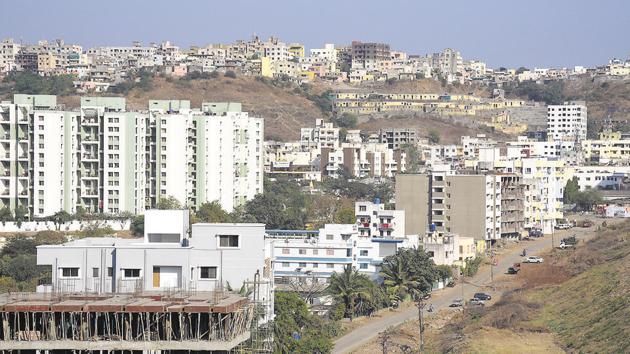Expanding Pune: How ready is PMC to uplift merged villages?
Inclusion of 11 new villages within PMC limits has accelerated the transformation of the city into a megapolis, but critical attention needs to be paid to developing infrastructure in the new areas
The inclusion of 11 new villages, preceded by 23 villages in previous years, to the Pune Municipal Corporation has accelerated the transformation of Pune into a megapolis. While this will certainly help decongest the city, critical attention needs to be paid to developing urban infrastructure in the new localities.


The Maharashtra government had recently merged 11 villages surrounding Pune to the Pune Municipal Corporation (PMC). A similar exercise was executed in 1997 when the city was expanded with the inclusion of 23 villages to the corporation limit.

However, the state of public amenities in these 23 merged villages including Kharadi, Ambegaon and Dhanori has remained unsatisfactory even after 20 years. Many of the localities don’t even have basic infrastructure. This has now put the spotlight on whether PMC will be able to do justice in terms of development to the 11 newly merged villages as it had failed in doing so to the villages merged in 1997.
PMC city engineer, Prashant Wagmare, accepted that hardly few areas like Baner and Kharadi were developed properly after being merged to the municipal corporation while a vast majority of other villages still remain under-developed. “Political will is important for the development of any area. If the elected members had shown eagerness in executing basic projects and land acquisition, it would have helped the areas develop rapidly,” said Waghmare.
The state government had approved the proposal to merge 11 new villages; Uruli Devachi, Phursungi, Bavdhan Budruk, Lohegaon (remaining), Hadapsar (Sadesatra Nali), Mundhwa (Keshavnagar area), Shivane (remaining), Dhayari (remaining), Undri, Ambegaon Khurda and Ambegaon Budruk; to the city limits in July 2017.
Further, the state government also gave its nod to the proposal to merge 23 more villages to the PMC over the next three years. This move is expected to put more pressure on PMC, which is already facing a funding crisis with the merger of the 11 villages.
PMC, now bigger than the Mumbai corporation in terms of area, has become Maharashtra’s biggest municipal corporation. But considering PMC’s current revenue status, it’s beyond its financial capacity to facilitate efficient development in all the newly merged areas. As per the primary estimate, PMC will need ₹5,740 crore to provide basic infrastructure to the villages.
This is worrisome as the PMC’s annual budget is only ₹5,600 crore, which means that the development of the newly merged areas won’t happen even if the municipal corporation channels its entire budget towards the cause.
Bharatiya Janata Party (BJP) leader and spokesperson, Ujwal Keskar, said, “Now, the area under PMC is even bigger than that of Mumbai municipal corporation. PMC’s budget is hardly ₹5,600 crore while Mumbai municipal corporation’s budget is more than 1-lakh crore, which is larger than that of many states in the country. If we analyse the financial condition of the Pune civic body, there is no need of any expert to decipher the fate of the merged areas. Despite having the will to facilitate development, it would not be possible to do justice to the newly merged areas due to financial problems.”
Keskar added, “If there are some strong political leaders from these areas, they can influence and demand some budget from the state government for the development of the areas . Currently, almost 50 percent of the ₹5,600 crore budget goes on salaries and pensions. A part of budget also goes into maintenance work and hardly 30 per cent of the budget can be earmarked for development of the merged areas. With many mega projects coming up in the city, including the Metro project, river development project and 24x7 water supply scheme, a major chunk of the budget will be absorbed by them as well.”
Prashant Waghmare also added that as the merged areas were outside the PMC limit before, even basic rules and regulations were not stringently followed there. “Many of the villages do not even enough space for widening or making new roads and other facilities. Pieces of land have been encroached illegally and many of them already have buildings. It would be challenging to reserve land for even basic amenities like hospitals, schools, gardens, play grounds and the fire brigade. Another challenge would be the land acquisition process. As per the new land acquisition act, the civic body would need to give good compensation for land acquisition and the PMC does not have enough budgetary provisions for giving an adequate compensation for each piece of land it acquires.





